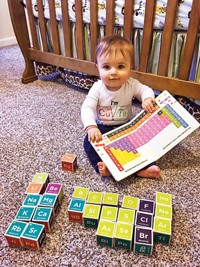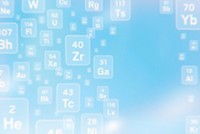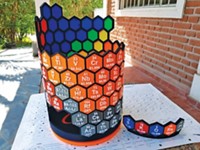Advertisement
Grab your lab coat. Let's get started
Welcome!
Welcome!
Create an account below to get 6 C&EN articles per month, receive newsletters and more - all free.
It seems this is your first time logging in online. Please enter the following information to continue.
As an ACS member you automatically get access to this site. All we need is few more details to create your reading experience.
Not you? Sign in with a different account.
Not you? Sign in with a different account.
ERROR 1
ERROR 1
ERROR 2
ERROR 2
ERROR 2
ERROR 2
ERROR 2
Password and Confirm password must match.
If you have an ACS member number, please enter it here so we can link this account to your membership. (optional)
ERROR 2
ACS values your privacy. By submitting your information, you are gaining access to C&EN and subscribing to our weekly newsletter. We use the information you provide to make your reading experience better, and we will never sell your data to third party members.
Science Communication
Newscripts
Comic-book science and science comic books
by Brianna Barbu
May 6, 2022
| A version of this story appeared in
Volume 100, Issue 16
Marvelous materials

This Newscriptster has always loved a good fantasy epic or sci-fi adventure as an escape from ordinary reality. But sometimes it’s fun to mix fantasy and reality. In fact, there’s a whole subgenre of science communication exploring how stuff from books and movies stacks up against real-world science.
“Movies are cool, everybody’s watching those, everybody can talk about them,” says Ricardo Castro, a professor of materials science and engineering at the University of California, Davis. He’s taught an intro-level engineering class based on Marvel comics and movies since 2016. Bringing his love of superheroes into his lectures “opened a whole new universe” for connecting with students—especially those who wouldn’t normally sign up for an engineering course.
One of the materials Castro discusses in his class is vibranium: the main component of Captain America’s shield and Black Panther’s suit and part of a long-standing tradition of miraculous metals in fantasy and sci-fi that are superstrong but lightweight. Discussions about real-world analogs often start with titanium, which is about as strong as steel but half as dense, then move on to talking about composites and alloys in which small amounts of other elements can add strength to a metal without changing the weight much.
But at some point, it becomes necessary to admit that the most super materials in our world aren’t metals at all. Castro’s own research investigates ultrastrong nanoceramics. Kevlar beats titanium’s strength-to-weight ratio by a factor of more than 30, and carbon nanostructures are among the strongest materials ever measured. Carbon-based materials tend to be more flexible and therefore better at absorbing impacts without breaking.
Ultimately, the point in discussing this stuff isn’t to come up with a definitive answer about what Cap’s shield is made of—it’s to spark people’s curiosity and get them to think about science and technology in new, creative ways. “It’s really pushing you to say, ‘this is what is possible,’ ” Castro tells Newscripts.
Comical chemistry

Not only are comic-book characters a great tool for science education—so is the medium itself, as Colleen Kelley aims to show with Kids’ Chemical Solutions, a series of comic books she created to teach general chemistry concepts to kids ages 8–12.
“I think there’s a culture around chemistry that’s not all that positive, that actually begins in school,” Kelley tells Newscripts from the University of Arizona, where she manages the chemistry department’s instructional labs. She wants to get students interested early, before they have a chance to absorb the negative stereotypes that chemistry is a hard, not-fun subject.
To bring chemistry to a younger audience, she knew she wanted to use visual storytelling. “Stories are just a great way to segue into science and especially hard science,” she says. So she taught herself to write comic book scripts and recruited a former student to work on concept art.
The comics—Kelley has planned a series of 10, and the first two became available for preorder in May—follow twins Poppi and Ray as they investigate mysteries and solve problems using chemistry. (Fun fact: the fourth installment, the Case of the Vanishing Van Gogh, was based in part on a C&EN article, Kelley says.) Along the way, they learn about chemistry fundamentals like atomic structure, the periodic table, ionic and covalent compounds, and chemical equations.
Many of the colorful characters populating Kelley’s comics are anthropomorphized chemical elements—Poppi and Ray represent polonium and radium. That design choice is meant to introduce kids to symbolism in chemistry.
Kelley has piloted the first five books with kids, asking them to read the books and then complete puzzles that test their understanding of the lessons woven into the plot. From what she’s seen, the comics are working. Tweens are tackling—and enjoying—chemistry lessons that normally aren’t taught until high school or college, which she says is “a huge revelation on what we can accomplish in chemistry education.”
Orders for the first two books will begin shipping in August 2022.
Please send comments and suggestions to newscripts@acs.org.
UPDATE:
This story was updated on June 7, 2022, to note that the first two Kids' Chemical Solutions books are available for preorder now.





Join the conversation
Contact the reporter
Submit a Letter to the Editor for publication
Engage with us on Twitter